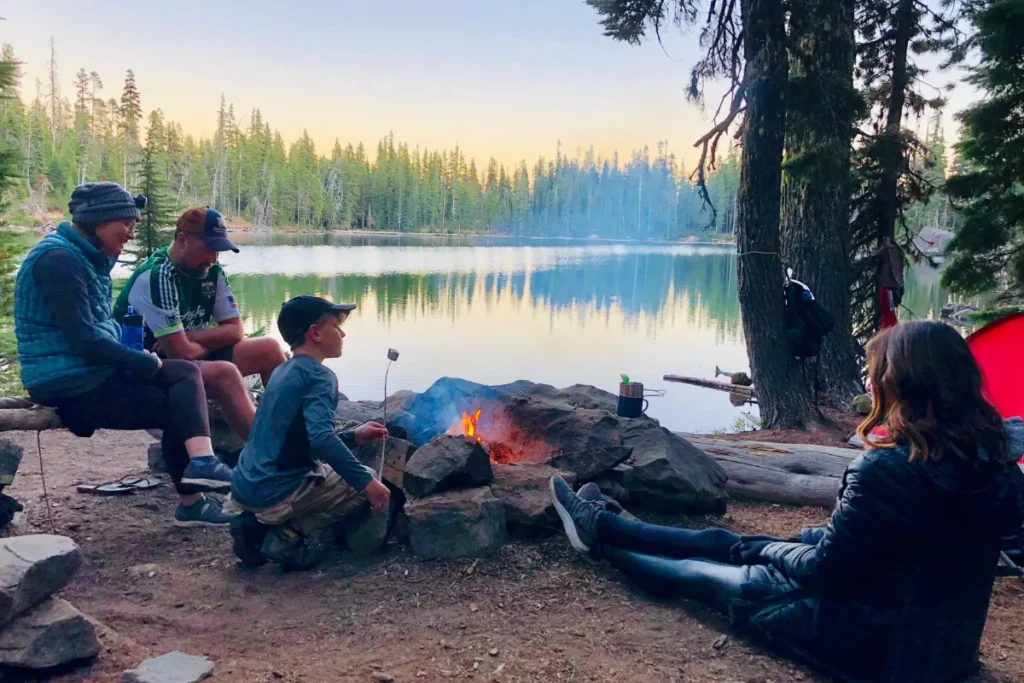Now that the warmer weather is here, Minnesotans want to get out and connect with nature. Amidst the COVID-19 pandemic, many are wondering if it is safe and what should they expect now that restrictions are being lifted for recreating and camping outdoors. Several agencies and collaborating partners have come together to provide support and guidance to the Minnesota Department of Natural Resources (DNR)—as well as local and county park departments, to provide industry guidance for safely reopening.
It is important to note that this guidance applies to all outdoor spaces, not just those under the auspice of the Minnesota DNR. These guidelines have been developed in tandem with the Minnesota Department of Health. They should be followed at the city, county, and state levels.
You can expect that operators will be changing how you arrange for your outdoor camping experiences. They are working to ensure social distancing, sanitation, and the safety of visitors and staff, here is what you can expect.
-
-
- A Required Preparedness Plan: All sites will have a plan.
- Single and multiple households: Sites may be made available for recreational use by members of the same household.
- Common spaces and services: Currently, these amenities are not open to the public; call your local destinations for more specific details.
- Capacity and cleaning of facilities: These facilities and services such as bathrooms/shower buildings, laundry, fish cleaning stations and docks, ranger stations, picnic shelters and areas (with reduced capacity), food service and rental/loaner recreational equipment, may be available to the public if the facility can operate consistent with Minnesota Department of Health (MDH), DCD and Department of Employment and Economic Development (DEED) guidance including social distancing and cleaning protocols.
- Consistent information: It is important that operators have clear and consistent messaging for visitors on social distancing, facility closures, building and site capacity limits, and expectations for visitor behavior.
- Appropriate signage: Public informational signage should be posted, where appropriate to encourage the following.
- Social Distancing
- Capacity limits for facilities
- Sanitizing protocols for individuals to follow before and after using public amenities.
- Basic COVID-19 health reminders.
-
Managing new cleaning protocols
-
-
- Required cleaning protocols for campground operators: Protocols should be posted for visitors, so they know what to expect.
- Staggered use of amenities: Operators may want to consider staggered use to facilitate enhanced cleaning and sanitation protocols.
- Proactive closures: If social distancing and sanitation protocols cannot be followed for any reason, proactively close the facility until they can be implemented.
- Staying informed: The goal is to minimize the risk of COVID-19 for all visitors and staff. Because this is a virus, circumstances are constantly changing, you must regularly consult the MDH, DCD, and DEED guidance as well as the DNR/MDH Outdoor Recreation Guidelines.
-
Guidelines for Visitors
-
-
- Plan ahead: When you are able, make reservations and purchase permits, firewood, ice, and other items online or by phone before you arrive.
- Be self-sufficient: Be prepared to be as self-contained and self-sufficient as possible. Bring your own soap, surface disinfectant supplies, hand sanitizer, paper towels, and toilet paper.
- Socially distance yourself: Set up campsite, sleeping area, campfire, and eating areas to maximize distance for adjacent campsites.
- Recreate with your household: Restrict use of your individual campsite/campfire to only those in your immediate household.
- Know before you go: Be prepared for lower levels of service and public contact.
- Follow the rules: Follow all campground rules and instructions, whether given in writing or verbally, that protect your safety and the safety of others. These rules and instructions will likely include facility-specific directions like:
- Wearing face masks in public settings, such as within bathrooms, shelters, and ranger stations and around kiosks
- Observing cleaning protocols for self-service facilities and amenities before and after using them.
- Leaving furniture, such as picnic tables and chairs, as you find them.
- Restricting the use of your individual campsite/campfire to only those in your immediate household.
- Following directional signage: wait your turn – that will promote social distancing in buildings, at overlooks, and around other confining spaces.
- Be well informed:
- Continue to consult MDH Guidelines for up-to-date information
- Visit the Minnesota DNR website for up-to-date Outdoor Recreation Guidelines
-
Peg Furshong is the Director of Programs at CURE and serves as a commissioner in district 3 for Greater Minnesota Regional Parks and Trails Commission.


